- Home
- James Joyce
Portrait of the Artist as a Young Man and Dubliners (Barnes & Noble Classics Series)
Portrait of the Artist as a Young Man and Dubliners (Barnes & Noble Classics Series) Read online
Table of Contents
FROM THE PAGES OF A PORTRAIT OF THE ARTIST AS A YOUNG MAN
FROM THE PAGES OF DUBLINERS
Title Page
Copyright Page
JAMES JOYCE
THE WORLD OF JAMES JOYCE
Introduction
NOTE ON CURRENCY AND COINAGE
NOTE ON THE TEXTS
A PORTRAIT OF THE ARTIST AS A YOUNG MAN
CHAPTER I
CHAPTER II
CHAPTER III
CHAPTER IV
CHAPTER V
DUBLINERS
THE SISTERS
AN ENCOUNTER
ARABY
EVELINE
AFTER THE RACE
TWO GALLANTS
THE BOARDING HOUSE
A LITTLE CLOUD
COUNTERPARTS
CLAY
A PAINFUL CASE
IVY DAY IN THE COMMITTEE ROOM
A MOTHER
GRACE
THE DEAD
ENDNOTES
INSPIRED BY A PORTRAIT OF THE ARTIST AS A YOUNG MAN AND DUBLINERS
COMMENTS & QUESTIONS
FOR FURTHER READING
FROM THE PAGES OF A PORTRAIT OF THE ARTIST AS A YOUNG MAN
It pained him that he did not know well what politics meant and that he did not know where the universe ended. He felt small and weak. When would he be like the fellows in Poetry and Rhetoric? They had big voices and big boots and they studied trigonometry. That was very far away.
His eyes were dimmed with tears and, looking humbly up to heaven, he wept for the innocence he had lost.
To merge his life in the common tide of other lives was harder for him than any fasting or prayer, and it was his constant failure to do this to his own satisfaction which caused in his soul at last a sensation of spiritual dryness together with a growth of doubts and scruples.
He was unheeded, happy, and near to the wild heart of life. He was alone and young and wilful and wildhearted, alone amid a waste of wild air and brackish waters and the seaharvest of shells and tangle and veiled grey sunlight and gayclad lightclad figures of children and girls and voices childish and girlish in the air.
—The artist, like the God of the creation, remains within or behind or beyond or above his handiwork, invisible, refined out of existence, indifferent, paring his fingernails.
I will not serve that in which I no longer believe, whether it call itself my home, my fatherland or my church: and I will try to express myself in some mode of life or art as freely as I can and as wholly as I can, using for my defence the only arms I allow myself to use, silence, exile and cunning.
FROM THE PAGES OF DUBLINERS
I kept her brown figure always in my eye and, when we came near the point at which our ways diverged, I quickened my pace and passed her. This happened morning after morning. I had never spoken to her, except for a few casual words, and yet her name was like a summons to all my foolish blood.
The car steered out slowly for Grafton Street while the two young men pushed their way through the knot of gazers. They walked northward with a curious feeling of disappointment in the exercise, while the city hung its pale globes of light above them in a haze of summer evening.
For the first time in his life he felt superior to the people he passed. For the first time his soul revolted against the dull inelegance of Capel Street. There was no doubt about it: if you wanted to succeed you had to go away. You could do nothing in Dublin.
A few light taps upon the pane made him turn to the window. It had begun to snow again. He watched sleepily the flakes, silver and dark, falling obliquely against the lamplight. The time had come for him to set out on his journey westward. Yes, the newspapers were right: snow was general all over Ireland. It was falling on every part of the dark central plain, on the treeless hills, falling softly upon the Bog of Allen and, farther westward, softly falling into the dark mutinous Shannon waves. It was falling, too, upon every part of the lonely churchyard on the hill where Michael Furey lay buried. It lay thickly drifted on the crooked crosses and headstones, on the spears of the little gate, on the barren thorns. His soul swooned slowly as he heard the snow falling faintly through the universe and faintly falling, like the descent of their last end, upon all the living and the dead.
BARNES & NOBLE CLASSICS
NEW YORK
Published by Barnes & Noble Books
122 Fifth Avenue
New York, NY 10011
www.barnesandnoble.com/classics
Dubliners was first published in 1914. A Portrait of the Artist as a Young Man was published in
The Egoist between 1914 and 1915, and in volume form in 1916.
Published in 2004 by Barnes & Noble Classics with new Introduction,Notes, Biography,
Note on the Texts, Note on Currency and Coinage,Inspired By,
Comments & Questions, and For Further Reading.
Introduction, Note on the Texts, Note on Currency and Coinage,
Notes, and For Further Reading
Copyright @ 2004 by Kevin J. H. Dettmar.
Note on James Joyce; The World of James Joyce; Inspired by A Portrait of the Artist
as a Young Man and Dubliners; and Comments & Questions
Copyright @ 2004 by Barnes & Noble, Inc.
Eight maps for Dubliners
Copyright @ 1982 The Regents of the University of California.
Used by permission of the University of California Press.
All rights reserved. No part of this publication may be reproduced ortransmitted in any form or by any means, electronic or mechanical,including photocopy, recording, or any information storage andretrieval system, without the prior written permission of the publisher.
Barnes & Noble Classics and the Barnes & Noble Classics colophon are trademarks of Barnes & Noble, Inc.
A Portrait of the Artist as a Young Man and Dubliners
ISBN-13: 978-1-59308-031-0
eISBN : 97-8-141-14336-8
ISBN-10: 1-59308-031-X
LC Control Number 2004101078
Produced and published in conjunction with:
Fine Creative Media, Inc.
322 Eighth Avenue
New York, NY 10001
Michael J. Fine, President and Publisher
Printed in the United States of America
QM
5 7 9 10 8 6
JAMES JOYCE
Irish novelist James Joyce was born on February 2, 1882, in Dublin. The eldest of ten children, James spent his early years in a solvent, middle-class Catholic household. At age six, he enrolled in prestigious Clongowes Wood College, but three years later his father’s spending habits and failed investments had depleted the family’s modest fortune. James was taken out of the costly Jesuit school, and the family was forced into more affordable housing, ultimately moving to a poor neighborhood on Dublin’s south side. Following a brief enrollment in a Christian Brothers school for the Irish poor, James was admitted, without fees, to another Jesuit school, Belevedere College. In the fall of 1898, he entered University College Dublin, where he studied languages, read widely, and was influenced by Yeats, Thomas Aquinas, and, especially, the plays of Henrik Ibsen. A devout Catholic in his youth, Joyce would break with the Church during his years at University College. In 1900 he published his first essay, a review of Ibsen’s When We Dead Awaken, in the London journal the Fortnightly Review.
After graduation in 1902, Joyce left Ireland for Paris, supposedly to study medicine. Instead, he worked
as a teacher and journalist and spent much of his time in the library. He returned to Ireland in April 1903 to visit his dying mother. The following year, he fell in love with an uneducated girl from Galway, Nora Barnacle, who would become his lifelong companion and the inspiration for the character Molly Bloom in his great novel Ulysses (1922). (Joyce would later immortalize the day they met, June 16, as Bloomsday—the day on which Ulysses takes place.) During this time he began work on an early version of A Portrait of the Artist as a Young Man, entitled Stephen Hero. He also began writing, under the nom de plume Stephen Dedalus, the stories that would later appear as Dubliners. Joyce persuaded Nora to move to the Continent, and after some misadventures and displacement, in 1905 the couple settled in Trieste, where they would remain for fifteen years. Scarcity of money did not affect Joyce’s productivity: He published a book of poetry, Chamber Music (1907), and completed Dubliners (1914), A Portrait of the Artist as a Young Man (1916), the play Exiles (1918), and large passages of Ulysses. The American poet Ezra Pound sponsored publication of his work and introduced him to the literary salons of Paris, while bookstore owner Sylvia Beach and publisher Harriet Shaw Weaver assisted Joyce with publication and patronage.
Joyce had at first conceived Ulysses as a short story, but he expanded it into a novel that he published in installments starting in 1918 and until it was banned for obscenity in 1920. Joyce and his family weathered World War I in Zurich and, after a brief return to Trieste, resettled in Paris in 1920. The full text of Ulysses was published in Paris in 1922, but the book continued to be banned in England and America. Joyce spent the next seventeen years writing Finnegans Wake, which would be published in 1939. The author’s growing literary success during this period eased the family’s financial burdens, but tragedy loomed in the background. Joyce’s vision troubles were acute, and his daughter, Lucia, diagnosed with schizophrenia, suffered a mental breakdown. In 1934 Ulysses was published in the United States, accompanied by a landmark obscenity decision; in 1936 it was published in England. Once again war struck, and Joyce returned to Zurich, where he died on January 13, 1941. James Joyce is widely regarded as among the most important writers of the twentieth century.
THE WORLD OF JAMES JOYCE
1882 James Augustine Aloysius Joyce is born on February 2 in the Dublin suburb of Rathgar to Mary Jane Murray Joyce and John Stanislaus Joyce. Virginia Woolf is born.
1884 Nora Barnacle is born in Galway on March 21. Stanislaus Joyce, James’s brother, is born on December 17.
1887 The Joyce family moves to the seaside town of Bray.
1888 James enters Clongowes Wood College, a Jesuit school known as the Eton of Ireland.
1891 James withdraws from Clongowes because his father can no longer afford the tuition; for the next two years he is informally educated at home. Irish political leader Charles Stewart Parnell dies. James writes the poem “Et Tu, Healy” about Parnell’s betrayal.
1893 James enrolls in a Christian Brothers school. Soon after, he and Stanislaus are admitted, without fees, to Belvedere College, a Jesuit grammar school in Dublin.
1898 Joyce enters University College Dublin, where he studies modern languages. He is influenced by Yeats and Ibsen, and studies Dano-Norwegian in order to read Ibsen’s original work.
1899 Ibsen’s symbolic drama When We Dead Awaken is published.
1900 The Fortnightly Review, in London, publishes “Ibsen’s New Drama,” Joyce’s review of When We Dead Awaken.
1901 At his own expense, Joyce publishes “The Day of the Rabblement,” an essay critical of the parochialism of the Irish Literary Theatre (later to become the Abbey Theatre).
1902 Joyce graduates from University College and leaves Dublin for Paris with the intention of studying medicine.
1903 In April, Joyce returns to Dublin when his mother is diagnosed with cancer; she dies in the summer. Joyce resides for a short time in the Martello Tower at Sandycove.
1904 He has his first date with Nora Barnacle on June 16, a date he went on to memorialize as the setting for his novel Ulysses (1922); with the publication of Ulysses, June 16 will come to be known as Bloomsday. He has begun the autobiographical novel Stephen Hero, which later will become A Portrait of the Arist as a Young Man. He takes time away from working on Stephen Hero to write the first stories in the collection that will become Dubliners. In October, James and Nora leave Dublin and settle in Pola, Austria-Hungary.
1905 Foreigners are expelled from Pola, and the Joyces move to Trieste, Italy, where Joyce works at a Berlitz school. He submits an early version of Dubliners for publication. He meets and tutors then unknown novelist Italo Svevo, whose work he helps to publish. The Joyces’ son, Giorgio, is born on July 27. The Sinn Fein Party is organized in Dublin. George Bernard Shaw’s Mrs. Warren’s Profession opens in New York but is closed by the police censor after one performance.
1906 Joyce moves his family to Rome, where he works in a bank. Although their financial situation improves, Joyce is unhappy, and the family returns to Trieste after eight months. Henrik Ibsen dies.
1907 The couple’s daughter, Lucia, is born on July 26. Joyce completes “The Dead” and begins revising Stephen Hero as A Portrait of the Artist as a Young Man. His first collection of poems, Chamber Music, is published.
1909 Joyce returns to Dublin and opens the city’s first movie theater, the Volta; the venture fails. J. M. Synge writes Deirdre of the Sorrows; he dies later this year.
1910 Joyce returns to Trieste.
1912 He makes his final visit to Ireland to deal with problems in the publishing of Dubliners.
1913 D. H. Lawrence publishes Sons and Lovers. Shaw’s Pygmalion is first performed in Vienna.
1914 The Egoist begins serialization of A Portrait of the Artist as a Young Man. Dubliners is published in London. World War I begins.
1915 Italy enters World War I. The Joyces move from Trieste to Zurich. D. H. Lawrence’s The Rainbow is published.
1916 Patrick Pearse (Joyce’s former Irish teacher) and the Irish Republicans declare independence with the Easter Rising on April 24. Five hundred people are killed during the failed rebellion, and Pearse and fourteen other leaders are executed; Yeats writes “Easter 1916” to commemorate the event. C. G. Jung’s Psychology of the Unconscious, published in German in 1912, is published in English translation. A Portrait of the Artist as a Young Man is published in the United States.
1917 Joyce undergoes the first of twenty-five operations for eye diseases, including glaucoma and cataracts. The feminist and activist editor of the Egoist, Harriet Shaw Weaver, begins her patronage of Joyce. T. S. Eliot publishes Prufrock and Other Observations.
1918 Chapters of Ulysses begin to be published in the American journal the Little Review.
1919 The U.S. Post Office seizes and burns copies of the January and June issues of the Little Review. Joyce’s play Exiles is published in England and the United States. Following the war, the Joyces return to Trieste.
1920 The U.S. Post Office seizes and burns copies of the January issue of the Little Review, and the Little Review’s publication of Ulysses is halted by court order with half the book published. The Joyce family relocates to Paris. Edith Wharton’s The Age of Innocence is published.
1922 The Irish Free State achieves independence. Northern Ireland remains under British rule. American expatriate Sylvia Beach, owner of the bookshop Shakespeare and Company in Paris, publishes Ulysses on February 2. The U.S. Post Office burns a shipment of 500 copies. T. S. Eliot publishes The Waste Land and founds the literary journal the Criterion. Joyce begins work on Finnegans Wake; his final novel, it will take seventeen years to complete.
1923 Italo Svevo publishes La coscienza di Zeno (Confessions of Zeno). Yeats is awarded the Nobel Prize for Literature.
1924 The first piece of Finnegans Wake is published in Paris in the Transatlantic Review.
1925 In London, the Criterion publishes a second piece from Finnegans Wake.
1927 A second volume of poems by Jo
yce, Pomes Penyeacb, is published. Publication of the seven volumes of Marcel Proust’s À la rechercbe du temps perdu (Remembrance of Things Past), begun in 1913, is completed. Virginia Woolf’s To the Lighthouse is published.
1928 D. H. Lawrence’s Lady Chatterley’s Lover, Virginia Woolf’s Orlando, and Yeats’s The Tower are published.
1930 W. H. Auden’s Poems and T. S. Eliot’s Ash Wednesday are published. D. H. Lawrence dies.
1931 James and Nora marry for legal reasons. Joyce’s father dies.
1932 Lucia Joyce is hospitalized and diagnosed as schizophrenic.
1933 United States District Judge John Woolsey lifts the ban on Ulysses and, in his decision, writes a legal definition of obscenity.
1934 The first authorized edition of Ulysses is published in the United States.
1936 Ulysses is published in the United Kingdom.
1939 Finnegans Wake is published. World War II begins. W. B. Yeats dies.
1940 As France is invaded, the Joyces obtain visas for Switzerland and return to Zurich in December.
1941 Joyce dies of a perforated ulcer on January 13.
INTRODUCTION
Now that the dust of the previous century has settled, there seems little doubt that James Joyce was the most significant, the most influential English-language prose writer of the twentieth century. His one short-story collection, three novels, one play, and two volumes of poems have won him the devoted attention of students, scholars, and general readers alike; in scholarly terms alone, Joyce is now the second most densely explicated of English-language authors, after only Shakespeare. He has become, in both the public and scholarly imagination, the bespectacled (or sometimes eye-patched) public face of modern literature, in all its difficulty and hard-won pleasures.

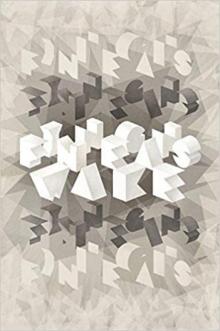 Penguin Classics the Restored Finnegans Wake
Penguin Classics the Restored Finnegans Wake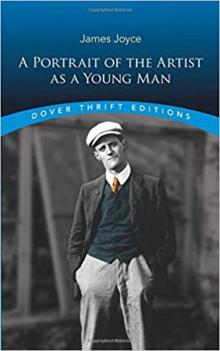 A Portrait of the Artist as a Young Man (Dover Thrift Editions)
A Portrait of the Artist as a Young Man (Dover Thrift Editions)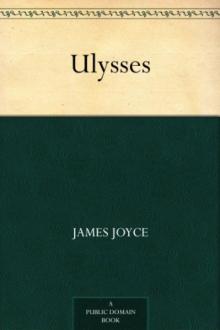 Ulysses
Ulysses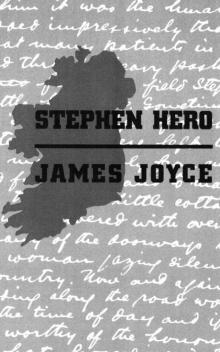 Stephen Hero
Stephen Hero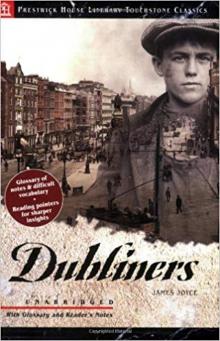 Dubliners
Dubliners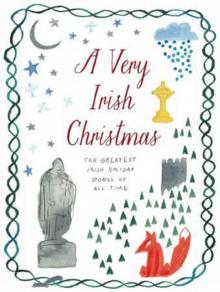 A Very Irish Christmas
A Very Irish Christmas The Complete Works of JAMES JOYCE
The Complete Works of JAMES JOYCE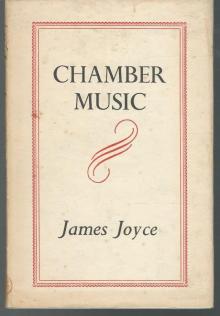 Chamber Music
Chamber Music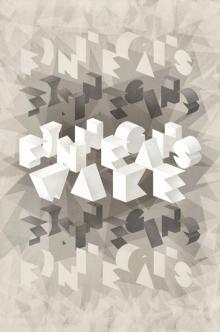 The Restored Finnegans Wake
The Restored Finnegans Wake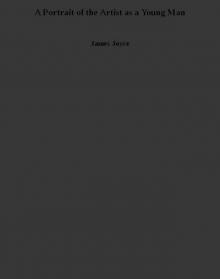 A Portrait of the Artist as a Young Man
A Portrait of the Artist as a Young Man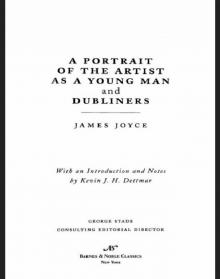 Portrait of the Artist as a Young Man and Dubliners (Barnes & Noble Classics Series)
Portrait of the Artist as a Young Man and Dubliners (Barnes & Noble Classics Series)